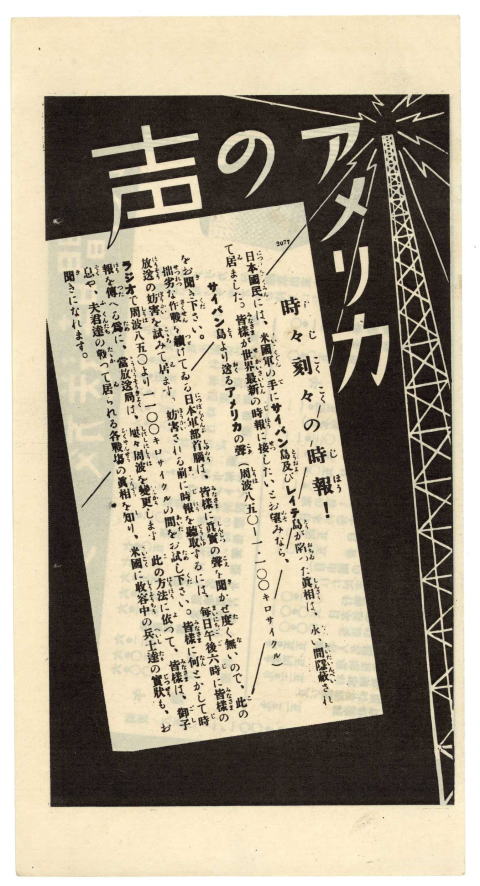This page contains kanji characters.
How big newspapers of Japan told at war? Although some local newspapers warned the conflict in Manchuria, big newspapers dispatched many journalists there and informed how a son of a local prefecture fought. They used new fax machines and airplanes to speed publishment. They claimed almost the same opinion. Our nation should hate arguments and omit diverse opinions.
Local newspapers decreased the publishing copies.
-
May 3 cross fire
May 4 cease fire agreement
May 5 9 Japanese bodies found
May ? ultimatum
May 8 Japanese troops began sweeping near Jinan and 膠済沿線
May 11 occupy Jinan
Jinan Incident
第二次山東出兵 済南事件
済南在留 no 邦人男女 280 名虐殺さる
済南事件 no sinjitsu
Manchurian Incident occurred on 18 September 1931. Japan built a colony in Manchuria. It was a beginning of the WWII. How Mainichi Newspaper wrote the incident? These were titles of Mainichi's opinions.[4]
-
Sep21 満州に交戦状態―日本は正当防衛
Sep23 満州事変の本質‐誤れる支那の抗議
Sep25 連盟の通告とわが声明
Sep26 第三者の批判の価値‐事件の真相が解っているか
Sep27 時局は極めて重大だ‐国民的覚悟を要す
Oct01 強硬あるのみ‐対支折衝の基調
Oct09 進退を決せよ‐無力な現内閣
Oct10 最終的対支抗議‐これ国民の声なり
Oct13 第三者の容喙[ようかい]に惑うなかれー正義の立場
Oct14 満州事件と政局‐在野党の消息
Oct15 堂々たる我主張‐国論一致の表現
Oct20 連盟は事情を正解せよ‐我国民は真剣
Oct23 撤兵は容易に出来ない
Oct24 無茶な決議案‐理事会の不誠意
Oct26 正義の国、日本‐非理なる理事会
Oct31 我国の覚悟‐今日の憂慮は誤りだ
How was about Asahi Newspaper? Inoue of Asahi met Uchida Ryouhei of Kokuryukai on 24 September. There was an executive meeting on 25 September. The owner of Asahi atended the meeting. It was unusual thing. Maesaka supposed that the important thing was decided in the meeting.[6][7] Asahi wrote that Manchuria and Mongol should be independence from China on 1 October 1931. IJA had planned Manchuria invasion and did military actions without agreement of IJA Minister and Government, It announced the result to the press. Government admitted the fact.
Bio weapon
At least 10 journalists of major newspapers knew bio weapon usage in middle of China in 1938.
| Year | 1926 | 1927 | 1928 | 1929 | 1930 | 1931 | 1932 | 1933 | 1934 | 1935 |
| Number | 251 | 331 | 345 | 374 | 504 | 832 | 2,081 | 1,531 | 587 | 653 |
Inukai Tsuyoshi
Saito Makoto
Okada Keisuke
| Rank | Prefecture | Share |
| 1 | Ishikawa | 93 |
| 2 | Tokushima | 85 |
| 3 | Gifu | 84 |
| 4 | Tottori | 82 |
| 5 | Okinawa | 81 |
| 6 | Fukui | 79 |
| 7 | Toyama | 77 |
| 8 | Saga | 69 |
| 9 | Mie | 67 |
| 10 | Aichi | 66 |
| 10 | Yamanashi | 66 |
| 12 | Shizuoka | 65 |
| Rank | Prefecture | Share |
| 1 | Osaka | 0 |
| 2 | Tokyo | 5 |
| 3 | Wakayama | 6 |
| 4 | Kanagawa | 6 |
| 5 | Saitama | 6 |
| 6 | Chiba | 8 |
| 7 | Ibaragi | 11 |
| 8 | Yamaguchi | 14 |
| 9 | Nara | 24 |
| 10 | Shiga | 28 |
I found the fact that the big mass newspapers are wide spread in lands of Tokugawa shogunate except for Yamaguchi. Ymaguchi was originally called Choshu where a lot of prime ministers of Japan brought up. So I think people of Yamaguchi feel themselves overlap Tokyo. I omit Yamaguchi.
Ishikawa is extremely far from big mass newspapers. Originally Ishikawa was called Kaga where people governed themselves under a religon of Budda expelling samurai lords. I hope new cultural movements originate from these prefectures. But how the prefectures have knowledge to innovate themselves?
Mainichi Newspaper published a recycle scrap campaing on 13 June 1941.
Kinzoku kaishu
Bamboo pikes
Mainichi, one of major newspapers suggested from IJN, wrote an article that Japan could not win by spikes of bamboo but aircarft on 23 Feb 1943. IJA selected the writer of the article for a soldier to punish. IJA would sent him for Iwojima. IJN protested why IJA selected such an old man. So IJA released him in 3-month military duty, for IJA selected 250 other drafted men of the same age. They were all sent for Iwojima and died.
Take-yari
Newspapers wrote that dolls presented from US were agents and school teachers should not take care of them in 1943. A school teacher told a sad matter at an elementary shool in Hokkaido. A doll was put on a cross, piked and burnt on the playground of the school.
Airborne suicide attack
Yomiuri Newspaper published Onishi's airborne suicide attack opinion on 19 July 1944.
Authority of governance
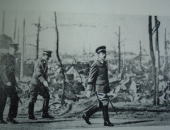 | 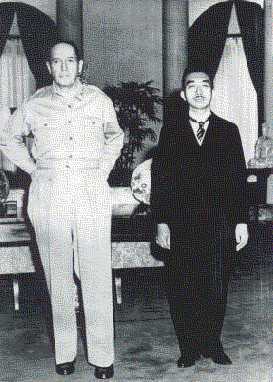 |
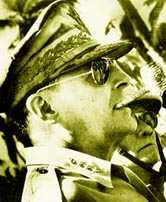 |
| Unusual cap |
MP(Kempei)
GHQ no shirei ni yoru eiga ni kansuru syochi
Makkasaa
Constitution and Konoe
Knonoe became an adviser of Mikado Secretary on October 11th 1945. He submitted to Mikado a proposal of revised constitution on November 20th 1945. Mainichi Newspaper criticized his proposal on December 21 1945.
Konoe Sian
GHQ and commons
GHQ ordered Japanese government to distribute land for peasants after the Pacific War. Commons supported war policy of martial government before the war, but they welcomed GHQ reforms in fever after the war. And GHQ controlled newspapers of Japan well.
Playing the traditonal cards(Hanafuda), commons called master card MCARTHUR in those days. The Diet of Japan resolutioned thanks to General McArthur, when he left Japan.
Hanafuda
Gensui ni taisuru Kansha ketugi
Rengokoku saiko sireikan
Commander under authority of Mikado
Commons were surprised that US President fired him and ordered simply him back USA. Because IJA division or IJN fleet commander were inaugurated as bureaucrats under authority of Mikado, therefore they had 2 official ranks of IJN or IJA and Mikado. They were never to mistake or lose in offical manner. So minister of IJN and IJA were very diffcult to fire them. Deputy ministers have beaucratic power as the same as before the war. Koike Yuriko, a minister of defense had to resign herself to fire Moriya Takemasa, a deputy minister. And also Tanaka Makiko, a minister of foreign affairs did so. Both ministers were governers of the Diet lawmakers.
Koike Yuriko
Tanaka Makiko
Kawashima Yutaka
Nowdays
Although there are 5 major newspapers, Yomiuri, Asahi, Seikyo, Mainichi and Nikkei which publish more than 3 million, their opinions have much influence on Japanese people directly. But each newspapers has each TV station except Seikyo. So major newspapers have influence directly. As it were notorious keiretsu. I doubt each journalist does not move other keiretsu.
Government controls inner journalists belonged to kisha club. The newspapers can omit other media like weekly magazines and small medias. The enclosure shows a character of Japanese nation.
Why are not we interesting to read major newspapers opinion or articles? Because resources of more than half articles are from data of government. The newspapers always write comments from authority who are favor of their opinions. They write an opinion about domestic economic issuse late half a year. They do not write IMF' consultaion about Japanese Government even. I knew deflation information in Japan not from Japanese media but from IMF.
Nihon no shinbun
Kisha club
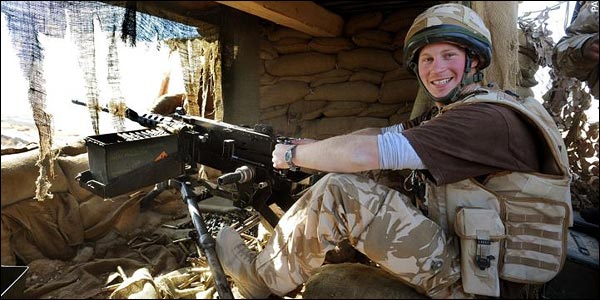 |  |
| Prince Harry's gunfire in Afghan | Prince Moriyoshi |
Harry
Richard the Lionheart(1157-1199)
Prince Harry in Taliban gun battle
Moriyoshi(1308-1335)
Yasashii kesyou-bunka
Japanese and UK royal symbols of authority
The last British king who campainged abroad was George II(在位:1727年 - 1760年). George participated at the Battle of Dettingen in 1743, and thus became the last British monarch to lead an army in battle.[9] While Mikado had not campainged once since Nara era. Mikado was called Sumeramikoto before Nara era. Schloras in Edo era copied the Chinese concept of 親征. Chinese emperors commanded their armies at his palace. In Britain,
-
170年あるいは200年もかかった「統帥権」を巡る議会と国王(君主)との戦いの帰趨を決したのは、「イギリスの新聞」であり、「統帥権」の問題が解決されたのは、170年後の第一次パーマストン内閣、あるいは正式にはその後の第一次グラッドストーン内閣の下(1868年〜1874年)で「軍事改革」が行われ、軍最高司令官は陸軍大臣に従属することが決定された時であった[10]。
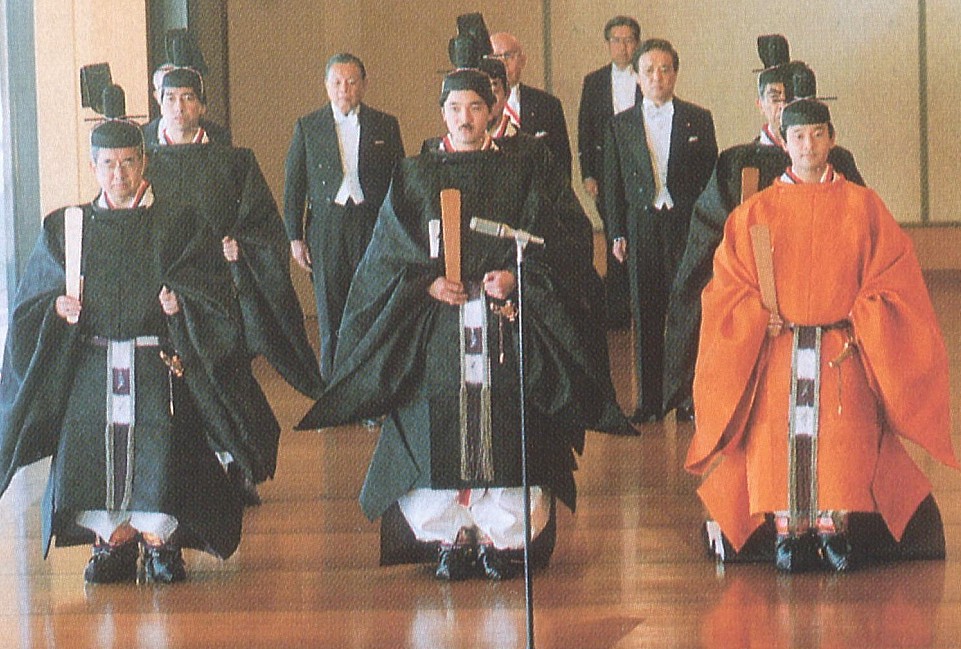 |  |
| Princes | Elizabeth II |
-
The LORD has broken the rod of the wicked, the scepter of the rulers, (Isaiah 14:5)
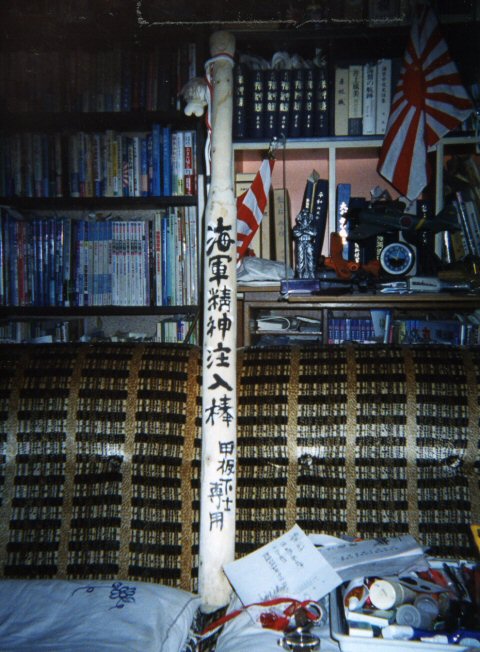 |
| Sailor lynch |
In Japan, IJN lynched drafted crews beating by a tough bat which was called a bat injecting spirit. The sailors of surfaced warships were on deck in line at night when no officer looked around the deck. Petty officers beat them with joy. Especially IJN used it to control young boys' minds and to train for suicide weapon crews, Kaiten or Fukuryu.[13][14] At last they thought they had better die rather than being punished in trainning school every day and hoped suicide attack in battlefield.
Japanese special servicemen occurred lynches to death. 100 service men killed themselves every year in 2004-2006.[15] Military service persons are 247,746 in 2009. So the killing ratio is 0.40 per 1,000 persons. Including civil men and women all over Japan the averaging ratio is 0.25 now. Once IJN called civil life shaba (娑婆) to distinguish themselves. It seems severe to work in Japanese warships even now. As for martime service notorious incidents are,
- 1999Nov08 さわぎり自衛官自殺事件
- 2004Oct27 たちかぜ自衛官いじめ自殺事件
- 2005Jan-- 海上自衛官への暴行罪・恐喝罪で有罪判決
- 2008Oct13 海上自衛官集団死の格闘訓練
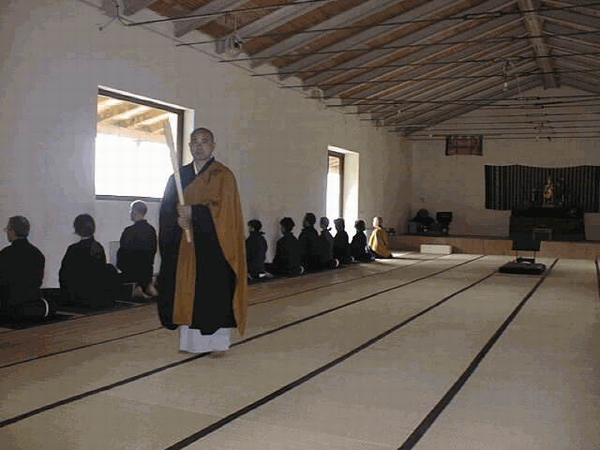 |
| Zazen |
Meditation on sitting and purification on walking
By the way, ancient Indian monks mediated deep sitting outside like Budda. While ancient Greek philosophers thougt walking like Socrates. Although Chinese people had sat on mat like Japanese till Han Dynasty, China began accepting Persian civilization and using chair ( 胡床 ).[8]
Japanese gyoja who believed a mixture of Shinto and Buddhism, and Western Christian people began pilgrimage in the feudal age. In the end of Edo era, commons suddenly began the big pilgrimage movement called Ejanaika. They walked to Ise Shrine from all over Japan. Kan Naoto was a pilgrimage, who is vice Prime Minister now.
Kan Naoto ga Shikoku jyunrei
70 years after the break of the Pacific War
Mainichi's Yoroku wrote that a few Japanese leaders predicted the defeat of the Pacific War. The writer wrote that the Japanese leader were not responsible for the war. The writer did not write that newspapers fueled the war at all. I think that the newspapers' war report fueled the war againt China and destroyed Japanese democracy in 1930s after all. Why do Japanese people trust such newspapers even now? The newspapers were the most responsible for the Pacific War. They had better not write any war report of propaganda.
Mainichi Newspares and other papers write an article about the Pacific War on 8 December every year. Kurihara, Writer or jyournalist of Mainich wrote a false story like contest to kill 100 people using a sword. Maeda's torpedo plane was wet, when its torpedo hit USS West Virginia. Funny. Kurihara thinks that the torpedo ran the same speed of Maeda's plane. Maeda was an air crew of IJN torpedo plane. Most of Japanese readers think how IJN air crews were brave. They bathed splash of torpedo explosion. Mainichi's editor does not have common sense that ordinary boys can understand physics. Boys know that a body in water runs far slower than in air. Mainichi Newspaper is the same as before in 1930s. Soon Mainichi would praise Toshiba's nuclear operators and special servicemen on 3.11 crisis. How does Mainichi write to continue wrong reports?
-
余録:「周囲は真珠湾の勝利にざわめいていたが…
「周囲は真珠湾の勝利にざわめいていたが、彼は浮かぬ顔をしていた……『えらいことになった。僕は悲惨な敗北を予感する。こんな有り様はせいぜい2、3カ月だろう』と沈鬱な声で言った」▲彼とは近衛文麿、70年前のきょう真珠湾攻撃の日の細川護貞による記録である。近衛は日中戦争では「国民政府を対手とせず」と声明してその泥沼化をもたらし、日米交渉に努力したものの南部仏印進駐で米国の石油禁輸を招く。日本の運命を決定づけた人だった▲一方、日米開戦に際し「三国同盟は僕の一生の不覚だった。こと(米国参戦防止の)志と違い、今度の戦争の原因になった」と涙ながらに知人に語ったのは元外相の松岡洋右だ。つい半年前の独ソ開戦時には対ソ侵攻を提言し、日米交渉にも強硬に反対した人物である▲「財布に1000円しかないのに1万円の買い物をしようという日本と、100万円をもって1万円の買い物をするアメリカとの競争でしょう。たちまちだめです」。こちらは昭和の動乱の原点、満州事変を仕掛けた軍人・石原莞爾の日米開戦間もないころの断言だ▲国民の多くが緒戦の勝報に熱狂していた中、その戦争への道を踏み固めた張本人たちの破滅の予言だ。彼らの無責任を今さらなじってもむなしいが、誰の責任かもあいまいな場当たり的対外膨張の破綻は、誰の予想をも超える途方もない数の内外の人命をのみこんだ▲責任の底が抜けた国策が国民の運命を狂わせるのは当時だけでない。こう聞けば今度の原発災害を思い浮かべる方もいよう。日本人が危機にのぞんで自らを映してみなければならぬ70年前の鏡だ。
最終回 「日本を滅亡させるバカげた戦い」 2011.12.3 09:28 演習にあらず…。攻撃を受ける真珠湾のフォード島。海軍基地のラムジー中佐は「演習にあらず」と打電した=「昭和」(講談社) 中国を日中戦争前に戻せという「ハル・ノート」を受け、軍部は高揚、開戦やむなしの雰囲気が充満する。開戦前最後の御前会議では首相の東条英機が冒頭、経過を説明し、反対意見もなく、わずか2時間で開戦が正式決定した。その7日後に真珠湾攻撃。「考」では責任の所在を明確にせず、問題を先送りしたつけが回った当時は現代とも重なり合う。責任を取らないのが日本社会なのだろうか。 ◇ 《*昭和16年12月 運命決めた会議》 ■わずか2時間 望まぬ結末 昭和16年12月7日深夜。天皇拝謁を終えた外相の東郷茂徳は皇居前広場に立ち空を見上げた。砂利の音だけが響く静寂に包まれていた。東条内閣発足以来1カ月半に及んだ日米交渉。「国民のため、全精神を傾倒した。この上は天の感得せられるところだろう」。望まなかった「結末」が数時間後に控えていた。 「著しき退歩で、交渉経緯を全然無視した不当なものと認めざるを得ない」。6日前、「ハル・ノート」手交を受けた12月1日の御前会議。開戦反対の最強硬派だった東郷も、もはや日米交渉継続を訴えることはできなかった。 「全将兵は士気極めて旺盛」(軍令部総長、永野修身=ながのおさみ)、「忍耐努力は皇国臣民にして為(な)す能(あた)わずということなし」(蔵相、賀屋興宣=かやおきのり)。首相の東条英機が「挙国一体必勝の確信を持し、戦争目的を完遂する」と締めくくった。正式に開戦を決めた歴史的会議はわずか2時間で散会した。 その後1週間は穏やかな空気が流れる。「今日の(駐米大使と米国務長官ハルの)会見は割合朗らか」(7日付朝日新聞夕刊)。開戦決意を米側に悟られないよう、言論工作も行われていた。開戦前夜、東条は布団に正座したまま慟哭(どうこく)したという。「12・8」は静かにその時を迎えた。 ○ ● ○ 8日午前3時25分(ハワイ時間7日午前7時55分)。世界で初めて登場した空母機動部隊が真珠湾を急襲する。米軍側は戦艦8隻のうち5隻が沈没、死者は2400人を超えた。 日本の奇襲に、はじめに「歓声」を上げたのは、攻撃を受けた米国の最高責任者、大統領のルーズベルトだった。「自分の代わりに日本が決定をしてくれた」。前年、戦争回避を公約に3選を果たしていた。 参戦の必須条件だった日本の先制攻撃を実現させた上、前夜のうちに暗号解読で内容を把握していた日本の戦争通告が、駐米日本大使館の不手際で攻撃より遅れたことも喜ばせた。 「わが敵国(日本)は、いともあざやかなだまし討ちをやってのけた」。開戦後のラジオ演説で、「交渉継続を追求した米国」と「不意打ちを食らわせた日本」という図式を強調、反戦派も多かった米国民を団結させることに成功した。 ○ ● ○ 「帝国陸海軍は今8日未明、米英軍と戦闘状態に入れり」。午前7時。NHKアナウンサー、館野守男は「満州事変からの長い間の緊張感から解放された」と感慨に浸り、大本営発表を読み上げた。 華々しい戦果が続々と伝えられる。「頭上に暗雲のごとく覆い被(かぶ)さっていた重苦しい憂鬱は雲散霧消した」(作家、長与善郎)、「心おごれる老大の 耄碌(もうろく)国を撃ちてしやまむ」(歌人、斎藤茂吉)、「見よ、一億の民おもて輝きこころ躍る」(詩人、高村光太郎)。 同日、ドイツ総統のヒトラーがモスクワ攻撃放棄を指令、「独の対ソ戦勝利」という開戦の前提が崩れたことも知らず、全国民の熱狂とともに、日本は「日本を滅亡させる、実にバカげた」(内大臣、木戸幸一)戦いに突入してしまった。 ◇ ≪if≫ ■開戦回避の聖断があったなら ソ連が参戦し、広島に続き長崎に原爆が投下された昭和20年8月9日。この日に至っても、ポツダム宣言の受諾条件をめぐり出席者の意見は割れていた。「(遼東半島を中国に返還するよう求められた)三国干渉の時の明治天皇をしのび、戦争を終結することを決心した」。一刻の猶予も許されない状況で、さらなる被害の拡大を食い止めたのは昭和天皇の決断だった。 天皇は輔弼(ほひつ)(補佐)機関の決定に対し「拒否権」が与えられていない、とする憲法解釈が支配的だった中で下された「聖断」。16年12月の開戦時も、最終局面で軍部を説得し、戦争を回避する手段は他に残されていなかったといえる。 しかし、従前から絶えず参戦反対を強調してきた天皇の周囲に、その意をくむ者はなかった。杜撰(ずさん)な見通しで「うそばっかり」(元首相・岡田啓介)の国力再検討の実態が進言されることはなく、軍部の執拗(しつよう)な説得に「結局は一戦避け難からんか」と徐々に悲観論に傾いていった。 「必敗」を確信する側近さえ、「皇室が国民の怨府になる」(内大臣・木戸幸一)と天皇の影響力行使に消極的だった。 12月1日の御前会議。3カ月前の会議で、明治天皇御製(ぎょせい)の歌を詠み、開戦回避を説いた天皇は終始沈黙を貫いた。ここに天皇の心情が反映されていたのではないだろうか。 最終回 考・責任 日本の組織の体質なのか 2011.12.3 09:52 今回が最終回になったが、日本はなぜ屈強な中立国だった米国を相手に開戦してしまったのか、非常にわかりにくい。傑出した独裁者に引きずられたわけでもなく、決定的な事態があったわけでもない。だが、どういう形で戦争を終わらせるかというグランドデザインもないまま開戦に踏み切った。 組織が責任の所在をあいまいにしたまま事態が進行し、責任を取らない姿勢に起因したのではないだろうか。だれかが「勝つ見込みはない」と言えば、踏みとどまることができたはずだ。しかし、陸軍や海軍、政府、それぞれの組織の立場で責任を取ることを恐れ、口に出すことはできなかった。国と国民を守るよりも、組織の論理が優先し、責任を取らない、取らせないことで事態が悪化してしまった。 12月1日の御前会議の各大臣の説明でも、現状は万全ではないが、戦いつつ検討を続けていけば戦争は遂行できるという曖昧模糊(もこ)としたものだった。 現代の政府や役所、企業、学校なども衰退や不祥事は責任の所在を明確にしないことで起きているのではないだろうか。 ☆ ★ ☆ この傾向は昭和に入り、顕著になる。関東軍が暴走し、大敗した昭和14(1939)年のノモンハン事件では敗戦の責任を取ったはずの服部卓四郎は参謀本部作戦課長、辻政信は同戦力班長という要職に就く。ほかにも中国大陸では現地軍の暴走が繰り返されたが、処分を受ける者はなかった。 開戦後も度重なる敗戦でも処分を受けることはほとんどなかった。海軍では暴風雨で飛行艇が不時着し、連合艦隊参謀長の福留繁がフィリピン抗日ゲリラに作戦機密書類が入ったカバンを奪われる「海軍乙事件」が起きる。しかし、福留は事情聴取に「漁民の手に渡ったが、関心を持たなかった」と証言、不問に付される。実際には書類はハワイの太平洋軍司令部に届けられた。 陸軍でも3万人以上が戦病死、餓死者が続出し敗走路は白骨街道と呼ばれたインパール作戦では、作戦を強行した第15軍司令官の牟田口廉也について、許可した上司にも責任が及ぶことを恐れ懲罰人事は行われず、牟田口は陸軍予科士官学校長に就任する。 その半面、兵には責任を求める。「生きて虜囚の辱(はずかしめ)を受けず、死して罪禍の汚名を残すこと勿(なか)れ」と記された戦陣訓では捕虜となることを認めず、玉砕や自決で多くの兵が命を落とすことになった。 ☆ ★ ☆ あえて言えば、国民も責任を取らなかった。日清、日露戦争の勝利で世界の一等国となった立役者の軍人をもてはやした。大正時代は軍縮で一時的に人気を落とすが、暴走する軍部を支持する声は根強かった。国民の支持が開戦に向かわせたのも確かだ。民主党政権後の日本の姿は国民の責任でもある。 責任を取らないのが日本の組織の体質。そうだとしたらあまりにも悲しい。70年前の教訓から学ぶことは多いのではないだろうか。
太平洋戦争:日米開戦70年 運命の12・8 破局への道、なぜ
日本軍がハワイ・真珠湾を奇襲して太平洋戦争が勃発してから、8日で70年を迎える。終戦までの3年8カ月の間に、日本人だけで約300万人が命を奪われた。補償を求める裁判が続くなど、戦争は今日にまでつながっている。大日本帝国の政府、軍部とも、アメリカとの戦争に勝つことはできないと承知していた。ではなぜ、開戦に踏み切ったのか。また、引き返す道はなかったのか。12・8から70年を前に、検証したい。【栗原俊雄】 ●分水嶺、三国同盟 太平洋戦争に至った原因としては明治以来の大陸膨張政策や満州事変などさまざまな指摘がある。今回は平和と戦争の分水嶺(ぶんすいれい)の一つとなった、日独伊三国同盟(1940年)以降を中心にみてみよう。 欧州で独伊の、アジアで日本の指導的地位を相互に認め、第三国(事実上アメリカ)との武力衝突の際は相互に軍事的支援を行う−−これが三国同盟の内容だ。 須藤眞志・京都産業大名誉教授(国際関係史)によれば「日本近代外交史上、最悪の選択」だった。「米国にとって最大の敵、ドイツと同じファシズムの国と認定されてしまった」からだ。井口治夫・名古屋大教授(日米関係史)も「フランスをあっという間に破ったドイツと日本が組めば、米国にとって脅威。日本は同盟を結ばず、その脅威をカードに対米交渉を続けるべきだった」と指摘する。 なぜ同盟を結んだのか。山田朗・明治大教授(近現代軍事史)は「第二次世界大戦初頭のドイツの華々しい勝利で日本、特に軍部は幻惑された。イギリスを屈服させられると信じた」と解説する。ドイツ勝利でアジアにおける植民地再分割に参加できる、との期待があった。 また、時の松岡洋右外相は、同盟で対米交渉を優位に進めようとし、ソ連を含めた4カ国同盟も想定していた。だが独ソ開戦で、松岡の構想は空中分解する。 ●独頼みの戦争構想 日米間には圧倒的な国力差があった。独力で米国を屈服させることは不可能と、当時の日本政府、軍首脳とも承知していた。では、どのように戦争を構想したのか。 開戦直前の41年11月15日、大本営政府連絡会議で「戦争終結構想」が決定された。主な内容は(1)南方作戦で戦略的自給圏を確保する(2)中国の蒋介石政権への圧力を強める(3)独伊と連携し英国を屈服させる(4)それによって米国の戦意を失わせ、講和に持ち込む−−といったものだ。対英戦争の主力は独軍だが、海軍力に乏しく、英軍を屈服させられるかは未知数。実現しても、それで米国が戦意を失うとは限らない。仮定の上に仮定を重ねた空想のような「戦争構想」で、日本は戦争へと進んでいく。 ●仏印進駐が「引き金」 日本の中国侵略に対し、米国は対日経済制裁を強めた。日本はさらに40年9月23日、フランスの植民地だった北部仏印(現ベトナム北部)に進駐。すでにフランスはドイツに敗北しており、日本にとっては石油など戦略資源が豊富な南方を獲得する好機だった。英米などによる蒋介石政権への支援物資補給路(援蒋ルート)を断つ目的もあった。 これに米国は、くず鉄など戦略物資の禁輸で応じた。日本は翌年7月2日の御前会議で、南進を優先し、状況に応じ北進(対ソ戦)することを決めた。一方米国は、在米日本資産を凍結してしまった。 それでも同月28日、日本軍は南部仏印に進駐し、米側は対日石油輸出を全面的に禁止。日本の政府、軍首脳は、これを全く予想していなかった。 当時、日本は石油の大半を米国からの輸入に頼っており、打撃は大きかった。軍部の見立てでは石油備蓄量は2年分しかなかった。オランダの植民地だった蘭印(現インドネシア)からの輸入交渉も、うまくいかなかった。 「日本側は、北部と南部ではたいした違いがないとみていた。ところが米国にとっては南部進駐で(アジアにおける米軍の拠点)フィリピンが脅かされると感じた」と、等松春夫・防衛大学校教授(政治外交史・戦争史)。米国はこの時点で対日戦を決意した、とみる研究者が多い。 ●「開戦決意」御前会議 国策については、政府や統帥部(陸軍参謀本部、海軍軍令部)首脳による「大本営政府連絡会議」で話し合い、その決定は天皇が臨席する御前会議で裁可された。会議では、天皇は発言しないのが習わしだった。 だが9月6日の御前会議で天皇は、明治天皇の和歌を読み上げた。「四方(よも)の海皆同胞(はらから)と思ふ世になど波風の立ち騒ぐらむ」。「避戦」のための、異例の発言だった。 だが、この日決定された「帝国国策遂行要領」には、10月下旬をめどに対米英蘭戦争の準備を完成させること、とある。また外交を進める一方、10月上旬ごろまでに要求貫徹のめどが立たない場合は「直ちに開戦を決意」することを決めた。戦争への、大きな前進−−。 天皇の発言について戦中派の作家、五味川純平は後に「詩歌は感傷的感慨の表現手段でしかない」「朕(ちん)は戦争を欲せず、と言ったらどうであったか」と嘆息している。 ●「切り札」東条内閣 対米交渉の鍵は中国撤兵だった。だが東条英機陸相ら陸軍強硬派は「多大な犠牲を払った中国から撤兵できない」と猛反対。日米交渉の見通しを失った近衛文麿首相は、内閣総辞職を選ぶ。 内大臣の木戸幸一は、後任首相として東条を天皇に推薦。陸軍ににらみがきく者を首相に据え、強硬派を抑える狙いだった。天皇は「『虎穴に入らずんば虎児を得ず』だね」と応じた。すでに米国という虎の尾を踏んでいたことに、日本の為政者は気づかなかった。 天皇は東条に、9月6日の決定を白紙に戻すように指示。東条は国策の変更を模索するが、国家が平和へとかじを切り直すことはなかった。 天皇が戦争回避を望んでいることを知った統帥部は、説得工作を進める。兵器や船舶確保の見通しについて具体的データを示し、対米英戦争は可能、とした。天皇は説得された。 山田教授は「甘い見通しだったが、軍官僚たちも安心材料が欲しかった。自分たちが作ったデータを信じるようになり、催眠術にかかったように『何とかなる』と思い込んだ」とみる。11月5日の御前会議で対米英蘭戦争を決意し、「武力発動の時期を12月初頭と定め」た。ただ、対米交渉が同月1日午前0時までに解決すれば、武力発動は停止することが確認された。 ●拒否できぬ海軍 対米戦は、海軍が「ノー」と言えば始められない。自らの意思で「避戦」を貫くことのできない近衛や、陸軍の一部も、それに期待した。だが及川古志郎海相は「戦争をするかしないかは政府の決めること」と判断を回避。永野修身・軍令部総長はより強硬な対米開戦論者だった。 井上寿一・学習院大教授(日本政治外交史)は「海軍は対米戦を想定して軍備を拡張してきた。いざという時『戦えない』とは言えなかった」とみる。現代史家の秦郁彦氏も「時がたつほど国力の差が出てしまう。石油も心もとない。やるなら今、ということだった」と解説する。 井上教授は「軍部に複雑な国家運営を任せるのは無理。また明治憲法体制下では天皇親政は否定されている。本来なら政党が責任を果たすべきだった」と指摘する。だが2大政党、政友会と民政党は、腐敗や政争のため国民の支持を失った。さらに大政翼賛会に参加するため、解党してしまった。「権力の核が陸軍と海軍、外務省などに細胞分裂のように広がり、誰も調整できないまま戦争に突き進んでしまった」(井上教授) ●ハル・ノート 対米妥協を模索する東条内閣は、米側との交渉で11月7日に「甲案」を提示。主な内容は(1)日中間の平和が確立した場合、最大25年をめどに中国から撤兵する(2)仏印の進駐軍は、日中戦争の解決か極東平和の確立とともに撤兵する−−だったが、事実上拒否された。さらに20日、乙案(日本が仏印以外の南東アジア、南太平洋地域には進駐しない代わりに米側は日米関係を資産凍結以前に戻す)を提示した。中国撤兵問題という懸案を棚上げするものだ。この時点で日本政府は、これを切り札かつ最終案と認識していた。 米側は結果的に「ハル・ノート」で応じた。主な内容は(1)中国、仏印からの撤兵(2)汪兆銘政権の否認(3)三国同盟の空文化。日本側の主張とかけ離れており、戦争を避けたがっていた東郷茂徳外相でさえ「もはや立ち上がるより外はない」と覚悟する内容だった。運命の開戦が決まった。 アメリカ側にも誤算があった。「対日強硬派は弱者(日本)は強者(米)に立ち向かわない、と読んだ。『窮鼠(きゅうそ)、猫をかむ』という発想はなかった」(須藤名誉教授)のだ。現実の歴史では日本は直ちに立ち上がり、米軍は緒戦に大きな痛手を受ける。日米は互いに、相手の譲れない一線を読み違えていた。 ●誤算続き、日米交渉 井上教授は「日米間には開戦を不可避とするような対立点はなかった」とみる。ではどの時点なら、戦争への道を引き返せたのか。 日米関係の改善のための交渉は41年4月から本格化し、野村吉三郎駐米大使によって日米「諒解(りょうかい)案」の内容が本国に伝えられた。日本政府は、それが米側の提案であると認識した。内容は(1)日本軍の中国撤兵などを条件として、米国が満州国を承認、日中和平交渉を仲介する(2)日米通商航海条約の実質的復活(3)米側は三国同盟を防衛的なものとして解釈し容認する−−など。 日本に大きく配慮した内容で、天皇は「我国が独伊と同盟を結んだからとも云(い)える、総(すべ)ては忍耐だね、我慢だね」と喜んだ。 だが同案は、実は日米の民間人らが作成した試案だった。米側のハル国務長官の真意は(1)他国領土保全と主権尊重(2)内政不干渉(3)通商上の機会均等(4)太平洋の現状維持−−との「4原則」で、日本の希望とはかけ離れていた。ただハルも、暫定案を交渉のたたき台として認めてはいた。 ところが、頭越しの交渉を知った松岡外相が反発。日本政府の回答は遅れ、しかも松岡の意を受けてはるかに後退したものになった。諒解案は雲散霧消する。 対米交渉に行き詰まった近衛首相は、米側にルーズベルト大統領との直接交渉を申し入れた。中国撤兵を約束し、あとで天皇の認可を得るというもくろみだった。 しかし米側はこれを拒否。近衛の指導力、日本の外交そのものへの不信感もあった。須藤名誉教授は「近衛は天皇の許可を得ていた節がある。実現していれば、日米交渉は続いたのでは」と言う。 日本の乙案提示後、米側は(1)民需用石油に限り禁輸を暫定的に3カ月停止し、その後は交渉次第で延長する(2)日本軍は南部仏印から撤兵する−−という「暫定協定案」を用意していた。だが中国が強く反対。チャーチル英首相も同調し、結局提示は見送られた。スティムソン陸軍長官から、日本の大輸送船団がインドシナへ向け航行中であることを聞いたルーズベルト大統領が激怒したため、という説もある。東条は敗戦後、「あれ(協定案)が来ればなあ」と悔やんだという。 ●避戦の可能性 ハル・ノートが開戦につながる「最後通告(通牒(つうちょう))」だったかどうかは、当時から議論がある。外務省を退職していた吉田茂は「最後通牒ではない」と、東郷外相に交渉継続を訴えた。問題の中国撤兵も「事実上、満州は除外されていた」(井上教授)。秦氏も「中国からすぐに出て行けという内容ではない。国際情勢をにらみながら対応していれば、活路が見えた」と話す。 真珠湾奇襲の直前、ソ連軍は独軍への反転大攻勢を始めていた。ハル・ノートをたたき台として交渉を続けていれば、独軍の苦戦が明らかになり、日本の戦略は足元から揺らぐ。日本は開戦に踏み切れなかったかもしれない。 ●暴走の教訓とは 70年前、破滅的な戦争へと突き進んだ歴史から、後世の私たちは何を学ぶべきだろうか。 国策決定者たちは、自分たちに好都合な情報を集め、希望的観測を続けた。その結果、独ソ戦の勃発や米国による石油禁輸など「想定外」の事態によって、窮地に追い込まれた。彼らが戦争へと前のめりになる中で、避戦を模索し続けた者も、少数ながらいた。国家は、それをくみ取れなかったのだ。 今年、東京電力福島第1原発の事故が発生。国策である原発推進の危険性を指摘する声は昔からあったが、生かされなかった。「原発は安全」という希望的観測は、「想定外」の巨大地震と大津波で崩壊した。 国策決定者・組織は時に、取り返しのつかない判断ミスを犯すものだ。しかし、今昔のミスに違う点もある。 開戦という国策決定には軍官僚や宮廷政治家ら、国民が選ぶことのできない者たちが大きな役割を占めた。当時、女性に参政権はない。国策に反対する言論の自由もなかった。 戦後、国民の権利は増大した。国家を運営する官僚は選べないが、政治家と政党を選ぶことはできる。戦前に比べ権限が強化された首相も、間接的にではあるが選出が可能だ。 それだけに、私たち選ぶ側の責任は大きい。戦争の惨禍で今も多くの人々が苦しんでいるように、選択失敗のツケは後世にまで累を及ぼすことを肝に銘じたい。 ============== ◇「生きて帰れぬ」覚悟−−真珠湾攻撃隊 前田武さん(90)は空母「加賀」の97式艦上攻撃機(艦攻、3人乗り)の偵察員だった。艦攻は800キロの魚雷を抱いていた。 真珠湾の深さは平均およそ12メートル。魚雷は投下すると50メートル程度潜るため攻撃は不可能だが、日本海軍は浅深度魚雷を開発した。さらに海面10メートルほどの低空から投下するため、搭乗員に猛訓練を課した。鹿児島湾などでの訓練は「土曜も日曜もなかった。嫌になるほど繰り返しやった」。 「浅深度魚雷は40本ほどしかなく、必ず当てられる者しか乗れなかった。名誉でしたね」。出航前、上官に「家族とお別れしてこい」と言われ、「戦争だ。シンガポール攻撃か」と話し合った。11月26日、機動部隊は択捉島の単冠(ひとかっぷ)湾を出撃した。そこで目的地を知らされたが、「アメリカとの和平が成立すれば帰る」とも言われた。「戦争はしない方がいい」と思った。 発艦するとき「生きては帰れないだろうな」と覚悟した。狙いは米戦艦ウェストバージニア。「魚雷が当たった瞬間、泥水がばーっと上がってきて、飛行機の中に入った。ふつうなら青い水が上がってくるのに」。「奇想天外な作戦」は成功した。 前田さんはその後ミッドウェー沖海戦、沖縄戦も生き抜いた。 ◇「政府広報機関」新聞の責任 東京日日新聞(現毎日新聞)は8日の夕刊(日付は9日)で、1面トップに昭和天皇の詔勅を掲載した。詔勅は中国の蒋介石政権を「東亜ノ平和ヲ攪乱(かくらん)」、米英を「東洋制覇」をもくろんでいると批判。「東亜永遠ノ平和ヲ確立シ以(もっ)テ帝国ノ光栄ヲ保全セムコトヲ期ス」などとした。続いて「英米の暴政を排し/東亜の本然を復す」との見出しの記事で「軍官民一体となって国難を突破する用意は全く成った」「真の平和を期待する明日の世界のために不退転の決意と不屈の努力を傾倒する」と記した。政府声明をそのまま載せ、政府支持一色の紙面だ。 ノンフィクション作家の保阪正康さんは開戦の経緯における新聞の責任を鋭く指摘する。「当時の新聞社は政府の広報機関。多少の例外はあるが、記者はジャーナリストではなく宣伝要員だった。同情すべき点もあるが、今日の教訓にすべきだ」 ============== ◇主な参考文献(順不同) 新名丈夫編「海軍戦争検討会議記録」(毎日新聞社)▽五味川純平「御前会議」(文春文庫)▽半藤一利、加藤陽子「昭和史裁判」(文芸春秋)▽吉田裕「アジア・太平洋戦争」(岩波新書)▽井口武夫「開戦神話」(中公文庫)▽古川隆久「昭和天皇」(中公新書)▽山田朗「昭和天皇の軍事思想と戦略」(校倉書房)▽須藤眞志「日米開戦外交の研究」(慶応通信)▽保阪正康「昭和陸軍の研究(上)」(朝日文庫)▽秦郁彦「統帥権と帝国陸海軍の時代」(平凡社新書)▽防衛庁防衛研修所戦史室編「戦史叢書 大本営陸軍部 大東亜戦争開戦経緯<5>」(朝雲新聞社)▽寺崎英成、マリコ・テラサキ・ミラー編著「昭和天皇独白録」(文芸春秋)▽コーデル・ハル「回想録」(朝日新聞社訳・朝日新聞社)▽参謀本部編「杉山メモ(上)」(原書房)▽ジョセフ・C・グルー「滞日十年(下)」(石川欣一訳・毎日新聞社) 毎日新聞 2011年12月4日 東京朝刊
[2] Yasukuni Shrine Mondai
[3] Senbotsu Senin no Hi
[4] 戦争報道 wo aotta 毎日 to 敢然 tohihanshita 石橋湛山
[5] Maesaka, p11
[6] 謀略 de okosareta 満州事変 to media no 変化
[7] 朝日 no 「歴史 to mukiau」wo 検証 suru
[8] アジア史概説 p191-192
[9] George II of Great Britain
[10] Tousui-ken
[11] Cardwell Reforms
[12] United Kingdom - Naval Discipline for Boys
[13] Hinkoku, p199-200
[14] Fukuryu
[15] さわぎり (護衛艦)
[16] Sceptre
[17] Shaku
[18] Coronation of the British monarch
[21] 朝毎読日経 VS 地方紙のシェア争い
[22] Noguchi, p6
